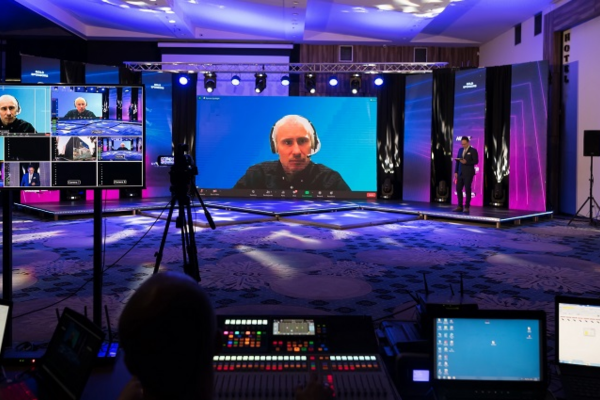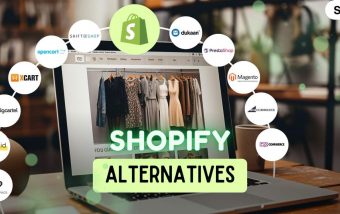What Does ML Mean In Text? Decoding The Social Media Lingo
Nov 28, 2025

Nov 28, 2025

Nov 28, 2025

Nov 28, 2025

Nov 28, 2025

Nov 27, 2025

Nov 27, 2025

Nov 26, 2025

Nov 26, 2025
Sorry, but nothing matched your search "". Please try again with some different keywords.


The way businesses connect with people has flipped on its head. I mean, think about it: not long ago, conferences and trade shows were the big thing. Big budgets, long flights, long days.
Now? A laptop and Wi-Fi can get you in front of the same crowd—or bigger, honestly.
This whole shift gave birth to something new: virtual event platforms for sales and marketing. And they’re not just a “Plan B” anymore. For sales and marketing folks, they’ve turned into a genuine advantage. More reach, more flexibility, and actual numbers to work with instead of guesswork.
Take ON24 virtual events platform, just as an example. It bundles live streams, breakout rooms, networking spaces, and even content libraries into one neat place online.
For marketers, that’s gold. Scale up to thousands worldwide, watch how people behave during the event, and personalise the whole experience. Way better than worrying about venue size or flights.
And no, it’s not about copying a physical event pixel by pixel. It’s about a new way of engaging—where convenience and data win.
Virtual event platforms for sales and marketing are making hosting events easier and faster. It is making things more convenient for everyone to host and attend events. However, there are some other benefits as well.
A normal event stops cold at geography. If you can’t fly, you’re out. Virtual platforms smash that wall. Now your “audience” could be in Sydney, New York, or Berlin—all at once.
Here’s the thing: physical events cost a fortune. Travel, hotels, catering. Virtual ones cut all that down, and suddenly your budget goes into content, speakers, and better follow-ups.
With online, you see everything. Who joined, how long they stayed, and what sessions clicked. Compare that to an expo where you’re guessing based on badge scans. Big difference.
No more sit-and-stare sessions. Features like polls, Q&As, and chat boxes keep people awake and involved. It feels more like a conversation than a lecture.
The pushback is always: “but won’t we lose the human vibe?” And sure, it’s different. But gone? Not really.
Breakout chats, networking lounges, one-on-one calls—they’re built in now. Some attendees actually prefer this format. Less pressure than walking into a giant room of strangers. So yeah, it’s not exactly the same, but the connection is still there. Sometimes even stronger.
Marketers use these platforms in tons of ways:
And let’s not forget—content doesn’t die after the event. Recordings can turn into blog posts, clips, or on-demand replays. One event keeps paying off.
It’s not perfect, though.
Fixing this means planning, testing, and learning each time. The companies that take it seriously usually come out ahead.
This space is only going to get wilder. AI is already suggesting sessions people might like. VR and AR? Augmented and virtual reality may soon allow participants to explore 3D event spaces, interact with products, and network in lifelike virtual environments.
Hybrid is also huge. Mix real events with digital ones and you get reach plus energy. Best of both worlds, honestly.
Here are some of the best virtual platforms that you can use for hosting events.
WebinarNinja combines content delivery, marketing, and engagement for virtual events. It offers customizable branding, performance tracking, and automated emails to improve audience interaction.
Moreover, it offers insights for teaching, lead generation, and product sales as well. It also offers post-event analytics to refine the strategies, making it a suitable choice for hosting engaging and impactful online events.
This is one of the best online platforms for trade shows and conferences. It offers virtual exhibit halls, live sessions, and networking spaces. It replicates live events well and features gamification and swag bags.
Also, it is ideal for managing vFairs and complex expos to ensure a seamless, high-quality, and engaging experience for both the attendees and organizers.
This is a perfect platform for data-driven virtual events. It offers detailed AI-powered analytics on the engagement of the attendees.
It tracks the engagement, attendance, and interaction, and then provides some actionable insights, so that the future marketing strategies and events can be refined.
This platform is perfect for hosting conferences and webinars. It makes sure that you understand your audience better and make informed and impactful decisions for the betterment.
Virtual event platforms for sales and marketing aren’t just a temporary fix. They’re here to stay—and they’re now central for brands that want to grow and connect.
As tech keeps moving, and hybrid models rise, the line between online and in-person will blur even more. The companies that lean in now? They’ll be the ones thriving while others scramble to catch up.
Barsha is a seasoned digital marketing writer with a focus on SEO, content marketing, and conversion-driven copy. With 7 years of experience in crafting high-performing content for startups, agencies, and established brands, Barsha brings strategic insight and storytelling together to drive online growth. When not writing, Barsha spends time obsessing over conspiracy theories, the latest Google algorithm changes, and content trends.
View all Posts
What Does ML Mean In Text? Decoding The Soc...
Nov 28, 2025
What Does DTM Mean In Text? One Acronym, Mu...
Nov 28, 2025
What Does HY Mean In Text? Deciphering Its ...
Nov 28, 2025
Is PeopleLooker Legit? Finding Public Backg...
Nov 28, 2025
Longest Snapchat Streaks: How To Trend With Y...
Nov 27, 2025

